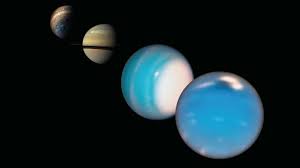NASA wrapped up the final assignments that must be completed ahead of the launch of the Lucy mission scheduled for October, the space body has announced. Lucy’s mission has become an ongoing job for some time now, but the rewards for this effort will be closer than before. NASA plans to launch a Lucy spacecraft on October 16, send it on a mission to study eight Trojan asteroids that have never been seen around Jupiter.
With all the other preparation work, NASA said the team was preparing to put Lucy in his capsule to be launched. It will be the first spacecraft to visit Asteroid Trojan, who lead and follow Jupiter while moving around the sun. It has taken the last eight weeks to prepare Lucy for its launch next month, including testing various electrical, mechanical and thermal systems, and practicing the sequence of launch that we will see on October 16.
This mission is promising who will, hopefully, help explain light not only to the origin of Trojan asteroid but also how the planets in our solar system are formed for a long time. The spacecraft is equipped with a massive solar array to power the instrument, while recently adding fuel – around 1.600lbs – will push Lucy to its destination.
After being fully dienacated, Lucy will be placed to the Cape Canaveral Cape Space Station. United Launch Alliance’s Atlas v 401 Rocket will send Lucy to Space, something that will – assuming no delay – occurs around 5:34 ET. Like other launches, there is a possibility that the weather problem can hit the event to the next day.
Lucy was built by Lockheed Martin as the 13th spacecraft under the NASA discovery program. Among other things, Lucy will be famous as the first spacecraft to make a few circles near the earth as part of its mission, something that is intended to provide “gravitational assist.”

